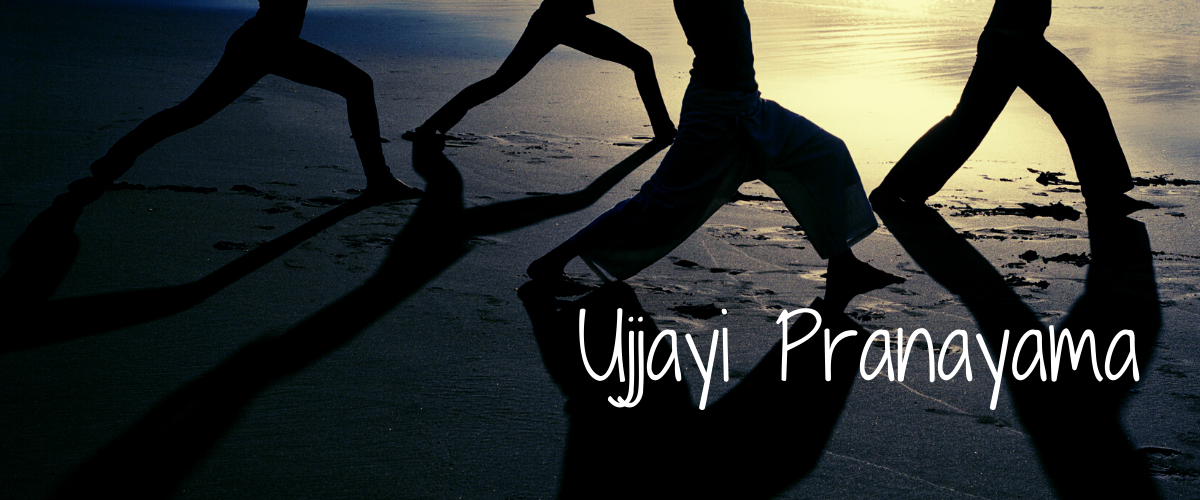Modern problems require modern solutions, but not every time. Pranayama, a 5000 year old scientific breathing technique has solutions for all our modern life problems. Be it stress, depression, anxiety , chronic diseases or the increasing allergies, pranayama knows a way forward.
In this article our focus will be on Ujjayi Pranayama also known as victorious breath. Here we will learn how to do ujjayi pranayama. We will also understand how to cultivate the ujjayi pranayama benefits.
Table of Contents
Understanding Ujjayi Pranayama
Before moving forward with this practice, let’s understand Ujjayi Pranayama. The name ujjayi itself is synonymous with winning. The term “Ujjayi” is derived from the Sanskrit words “ud,” meaning “up” or “expanding,” and “ji,” meaning “conquer” or “victory.” Therefore, Ujjayi can be translated as “victorious” or “expanding conquering breath.
To perform ujjayi pranayama, you need to slightly tighten the back of your throat as you breathe in and out through your nose. This constriction of the throat makes a soft sound, like the ocean waves. And that’s why It’s also called “Ocean Breath”, the sound is similar to the calming noise of ocean waves. Practising this helps you stay focused and relaxed.
How To Do Ujjayi Pranayama
Now let’s explore how to practise ujjayi breath. From timings to technique, we will guide you about everything.
Timings to perform Ujjayi Pranayama
When To do – Ujjayi Pranayama can be performed at any time of the day. It can be done in the morning for a calm and focused mind.
It is best to perform this pranayama on an empty stomach. You can also perform Ujjayi whenever feeling anxious or stressed. It can be incorporated while practising yoga or just before sleeping.
How Much To Do – As a beginner, you can start with 5 minutes a day. As you start doing it regularly, you can increase the timings by 2 minutes and so on. Try to aim for 15-20 minutes a day.
Ujjayi Pranayama Technique
Now let’s understand the Ujjayi Pranayama Process in a step by step manner.
- Comfortable Posture: Assume a seated position with a straight spine. Relax your shoulders and facial muscles.
- Natural Breathing: Start with a few natural breaths to settle into the practice.
- Inhale Through Nose: Now Close your mouth and take a slow, deep breath in through your nose, filling your lungs.
- Throat Constriction: As you inhale, gently tighten the muscles at the back of your throat. This gentle constriction creates a soft hissing. This sound can be compared to the sound of ocean waves.
- Full Lung Expansion: Ensure your lungs are fully expanded with air when you breathe in.
- Exhale Through Nose: Exhale slowly and steadily through your nose while maintaining the throat constriction. Make sure to keep your mouth closed.
- Equal Duration: Aim for equal lengths of inhalation and exhalation. This helps establish a rhythm in your breathing pattern.
- Repeat Mindfully: Continue this controlled breathing, focusing on the sound and sensation of your breath.
- Relaxation: If you feel any tension, especially in your face or neck, relax those areas.
Right vs Wrong Way of Doing Ujjayi Pranayama
As a beginner you wonder if you are doing it right or not? so here are do’s and don’ts to ensure you are doing it correctly.
| Do’s (Right Way) | Don’ts (Wrong Way) |
| Breathe naturally to start | Avoid straining the throat |
| Relax your facial muscles | Don’t make your face tense |
| Create a soft, gentle sound | Don’t produce a loud or forced noise |
| Aim for equal inhales and exhales | Avoid holding your breath |
| Practise regularly | Don’t rush or hurry through the practice |
| Listen to your body | Don’t overdo it; start with a comfortable duration |
| Feel the Breath: Focus on the sensation of breath | Avoid Loud Breathing: It’s not about making noise |
| Comfortable Posture: Find a relaxed sitting or lying position | Tension in Neck: Avoid tensing your neck muscles |
| Smooth Transitions: Make your breath transitions smooth | Impatience: Don’t get frustrated; it’s a learning process |
Ujjayi Pranayama : Precautions
Ujjayi Pranayama is a generally safe and beneficial practice, but there are specific cases when it should be avoided or practised with caution. Here are some considerations:
- Respiratory Issues: If you have chronic respiratory conditions, consult a healthcare professional before trying Ujjayi Pranayama.
- Post-Surgery or Injury: After recent surgery or with injuries affecting breathing related internal organs, seek guidance from a healthcare provider before practising Ujjayi.
- Pregnancy: Pregnant individuals should consult a qualified instructor or healthcare provider for modified or suitable breathing practices.
- High Blood Pressure: Practise Ujjayi with caution if you have high blood pressure, avoiding excessive breath retention. Seek guidance from a healthcare professional.
- Dizziness or Vertigo: Stop immediately if you experience dizziness and practice in a well-ventilated space.
- Personal Comfort: If uncomfortable or anxious, adjust the practice to your comfort level, especially if you’re a beginner.
- Beginner Caution: Start with shorter sessions and gradually increase duration as you become more familiar with Ujjayi.
By now you might have understood the techniques of Ujjayi Pranayama. Now you can start it with full dedication. Once you get regular with this practice, you will start experiencing the below mentioned benefits.
Ujjayi Pranayama Benefits
- Calms the Mind: Ujjayi Pranayama is effective in reducing stress. It makes you feel calm and relaxed.
- Enhances Focus: The mindful breathing in Ujjayi helps improve concentration and focus, making it a useful practice before meditation or mental tasks.
- Builds Internal Heat: The practice generates internal heat. Doing it before yoga practice can help with flexibility. It can make your Asana practise easy.
- Detoxifies the Body: Deep, intentional breathing helps in expelling toxins from the body as it improves circulation of blood and oxygenation.
- Stimulates Relaxation Response: Ujjayi activates the parasympathetic nervous system, which promotes relaxation.
- Thyroid Health: Ujjayi pranayama for thyroid can be a game changer. As it messages the thyroid gland and stimulates the blood flow around it.
- Asthma Support: For individuals with asthma, Ujjayi helps in regulating airflow, managing breath, and reducing the frequency of asthma attacks.
However, it’s important for individuals with medical conditions to consult healthcare professionals before incorporating these practices into their routine.
Conclusion
In this article we tried to resolve your concern about “How To Do Ujjayi Pranayama”. We hope that you understand the Ujjayi Pranayama Technique. But knowledge is incomplete without practice, so it is time you give this amazing practice a place in your daily routine.
And Ujjayi is just one weapon from the arsenal of pranayama. A well balanced practice of Pranayama should include different forms of pranayama. This way you can reap maximum benefits of this practice.
You can take help from this Breathing Yoga Practices playlist created by Yuvaap. Here you can learn all the breathing practices under the guidance of an expert.
So take the first step and harness the power of pranayama to conquer your day to day battles!
FAQs
- How many rounds are there in Ujjayi Pranayama?
Answer: You can do as many rounds as you feel comfortable with. It’s more about how long you do it rather than counting rounds. Start with a few minutes and go longer as you get better.
- What is the science behind Ujjayi Pranayama?
Answer: When you do Ujjayi, the parasympathetic nervous system is activated. This system is responsible for bringing calm to your body and this way ujjayi keeps stress at bay.
- Who should not practise Ujjayi Pranayama?
Answer: If you have breathing or health problems, it’s a good idea to talk to a doctor before trying Ujjayi. Pregnant people should also be cautious and maybe ask a yoga teacher or doctor for advice.
- What is the main benefit of Ujjayi practice?
Answer: The best thing about Ujjayi is that it helps you feel calm and less stressed. It’s like a superhero power for your mind and body.











